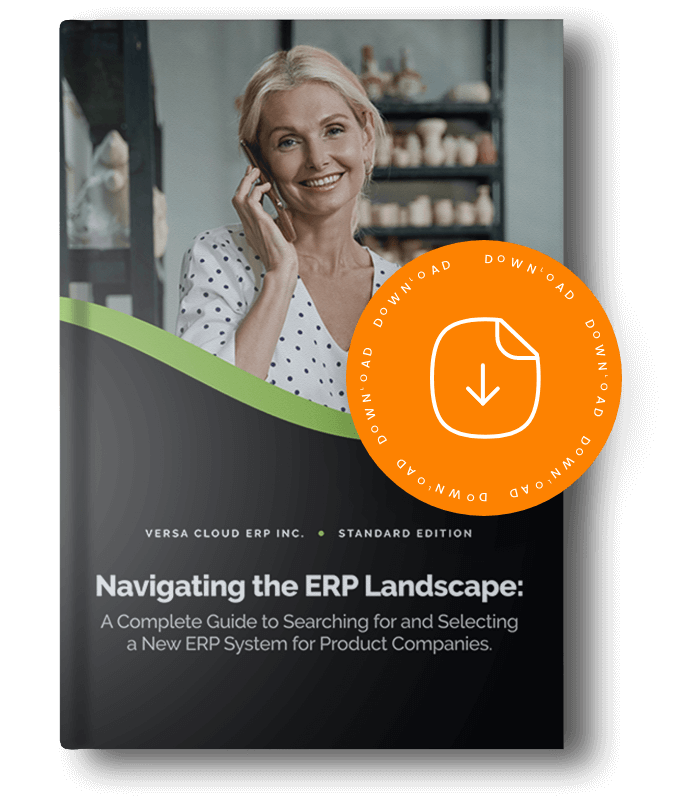The Dangerous Myth Businesses Still Believe
Imagine walking into a warehouse stacked wall-to-wall with inventory. On the surface, it looks like a well-oiled machine. To many business owners, this signals control, preparedness, and customer-centricity. “We never run out of stock,” they boast. But dig a little deeper, and you’ll find something far more troubling: capital locked away, excess operational strain, and a growing pile of obsolete goods.
This idea—that more inventory equates to greater control—has firmly lodged itself in the fabric of doing business. And while it may start with good intentions—providing quick service and not running into expensive stockouts—it can eventually become antithetical to the very end goals the philosophy is trying to deliver.
It creates inefficiency, waste, rigidity, shapes warehouses as expensive cabinets not as strategic fulfillment operations, sucks working capital out that could be spent on innovation, or perhaps just growth, and above all else, creates a false sense of security for business leaders.
Companies don’t need more products—they need a better way to manage products! ERP doesn’t only manage inventory, it transforms how a business thinks about and manages inventory. Before discussing how, let’s consider why this myth will not die.
Why ‘More Inventory = More Control’ Is a False Narrative
It’s understandable why companies overstock, given unpredictable demand, unreliable suppliers, and logistical delays, holding extra stock feels like a smart way to manage risk. Internally, teams often function in silos; sales teams want to say “yes” to customers, while operations teams don’t want costly delays.
But when businesses hold excessive inventory, they’re not creating control—they’re creating chaos that just hasn’t surfaced yet. Here’s why:
- The process of overstocking is frequently used to make up for poor accuracy in forecasting.
- Inventory gets used as a buffer for unreliable vendors, instead of solving the root cause.
- Manual or antiquated systems fail to provide real time visibility, and teams are left with a choice to be conservative.
Control doesn’t come from holding more. It comes from knowing more. True control is being able to respond in real time to what your customers want, how your suppliers are performing, and what your financial situation allows.
Contemporary ERP systems completely alter the mindset of an enterprise. They allow an enterprise to operate by live data (not conjecture) and tie together stock on-hand data to demand, purchasing, fulfillment, and financials, ensuring low inventories while maintaining performance.
The Invisible Costs That Don’t Show on Your Inventory Sheet
The financial implications of purchasing inventory are only the tip of the iceberg. The real dangers of overstocking are croquet, incremental, and are often not evident until you enjoy the privilege of data. Let’s now examine the secret costs that erode profit and flexibility over time:
a. Working Capital Drain
Every unit of unsold inventory represents money that’s not working for your business. It’s locked up, depreciating in value, and potentially becoming obsolete.Business can run into cash flow challenges even with lots of sales when too much money was tied up in stock.
With ERP, your inventory value can be tracked and viewed in real time, allowing to see where your cash is stuck and make the decision on where to keep, move or drop inventory.
b. Lost Strategic Agility
Excess stock limits your ability to pivot. Want to test a new product line or react to market shifts? You can’t if your capital and warehouse space are already spoken for. The longer you hold products, the more risk you take on.
ERP gives you SKU-level visibility and lifecycle management tools that help you act fast when the market changes—without sacrificing service.
c. Forecast Pollution
Inventory systems often rely on historical trends.However, if the past behavior involves surplus buying, it distorts your projections, and results in revenue exaggeration during future procurement, and perpetuating the wasteful cycle.
ERP software leverage machine learning and built-in demand data to update forecasts, as opposed to making inventory decisions based on faulty patterns.
d. Margin Erosion from Forced Discounts
Too much inventory means you’ll eventually need to discount to move it. That eats away at your margins and conditions your customers to wait for price drops.It also diminishes perceived product value.
With ERP, you can identify slow-moving inventory early and then take actions – targeted promotions, bundling, reallocated regionally, or return to suppliers – before discounting.
e. Compliance & Carbon Costs
Many industries have stringent compliance requirements for traceability, expiration, or handling procedures. Excess inventory creates additional risk for possible non-compliance since all stock has the potential to become stale or expired.
Beyond compliance is sustainability. Goods that remain unsold or are thrown away contribute to carbon waste and now customers are paying attention. ERP will help you track inventory age, automate FIFO (first-in, first-out), and help you reduce your physical and carbon footprint.
The Inventory Paradox: Less Can Actually Mean More
It might sound counterintuitive, but reducing inventory can make your business stronger. How? Because you gain:
- Agility to pivot when trends change
- Cash flow to invest where it matters
- Clarity to act with confidence
When you move from stockpiling to optimizing stock, you move from being a “reactor” to an “anticipator.” That is the power of a modern ERP system. It connects your approach to inventory to every area of your businessessales, finance, procurement, and customer experience.
If ERP is not an inventory management system, then think of it as a real-time decision engine. It tells you what you need to buy, when do you need to buy it, how much do you need to buy, and what to do when your plan changes.
Signs You’re Caught in the Inventory Illusion
Here are some clear indicators that your inventory might be holding your business back:
- Reorder points are static and rarely reviewed or recalculated.
- Procurement decisions are based on gut feeling rather than real-time data.
- Warehouses are full, yet backorders are rising.
- Inventory aging reports are outdated or nonexistent.
- Sales and purchasing teams rely on Excel, not integrated systems.
- Frequent discounting is used to clear excess stock.
- Inventory levels grow faster than your revenue.
If any of these sound familiar, you’re not alone. But with the right tools, it’s entirely fixable.
How Modern ERP Ends the Illusion at Its Root
Modern ERP systems are built to remove friction, guesswork, and outdated practices. Here are some of the transformative capabilities they offer:
Predictive Inventory Forecasting
ERP platforms analyze historical data, market signals, customer behavior, and external variables to predict demand accurately. This reduces the need for safety stock and ensures you purchase only what you need.
Live Multi-Warehouse Tracking
No more surprises. Monitor inventory across multiple warehouses, stores, and regions in real time. This allows you to avoid over ordering and makes the redistribution process quick and efficient.
Automated Replenishment Logic
Establish intelligent reorder points and rules that adapt to the real-time demand and supply conditions. Let the system do the painful heavy lifting while you engage with strategy.
Product Lifecycle Intelligence
Know when to scale up, maintain, or phase out products. ERP gives you visibility into sales velocity, seasonality, and profitability of each SKU.
Supplier Performance Metrics
Measure vendors on lead times, delivery accuracy, and defect rates. ERP platforms help you identify high-risk vendors and plan accordingly, reducing the need to buffer with extra stock.
Use Case Snapshot: Scaling Without the Bloat
Take the example of a mid-sized consumer electronics distributor. They were growing fast but struggling with rising warehouse costs and stockouts at the same time. After implementing ERP:
- They identified over $2.5M in dead inventory.
- Automated replenishment decreased over-ordering by 30%.
- Warehouse space was optimized to prioritize faster moving items.
- Using improved forecasting and inventory management, order accuracy improved by 22%.
The result? More sales, fewer write-offs, and a more agile supply chain.
Beyond Inventory: ERP as a Strategic Operating System
When ERP helps fix your inventory issues, it creates positive ripple effects across your business:
- Finance: At best guess forecasting = better cash flow.
- Sales: Improved inventory accuracy = more avoided lost sales.
- Operations: Smart warehousing = faster fulfilment.
- Customer Experience: On-time delivery = higher satisfaction.
- Compliance: Accurate traceability = less risk.
ERP isn’t just about tracking inventory. It’s about connecting the dots across your business so you can grow sustainably, profitably, and in full view.
Final Thoughts: Don’t Let Overstock Be Your Strategy
It’s time let go of the former idea of more stock equaling more control. When it comes to business today, particularly in a highly competitive world, control means accountability, visibility, and being proactive and data-driven.
A modern ERP system will help you leverage your inventory as a strategic asset, instead of a liability. It gives you the ability to make intelligent decisions, eliminate waste, and scale with confidence.
There’s no need to hoard stock for security. What you need is the right information—at the right time—to keep you in the flow.
It’s time to stop accepting excess inventory as your protection. How long will you continue to improve your safety net at the expense of being smart, lean, and optimized?
Take the First Step Towards Transformation
Want to be part of the innovation journey? Sign up for early-access demos, product updates, and insider insights into Versa’s evolving platform.
Effectively manage your financials, multiple channel inventory, and production workflows with our award-winning ERP.
Let Versa Cloud ERP do the heavy lifting for you.
Do Business on the Move!
Make your businesses hassle-free and cut the heavyweights sign up for the Versa Cloud ERP today!!
Join our Versa Community and be Future-ready with us.









